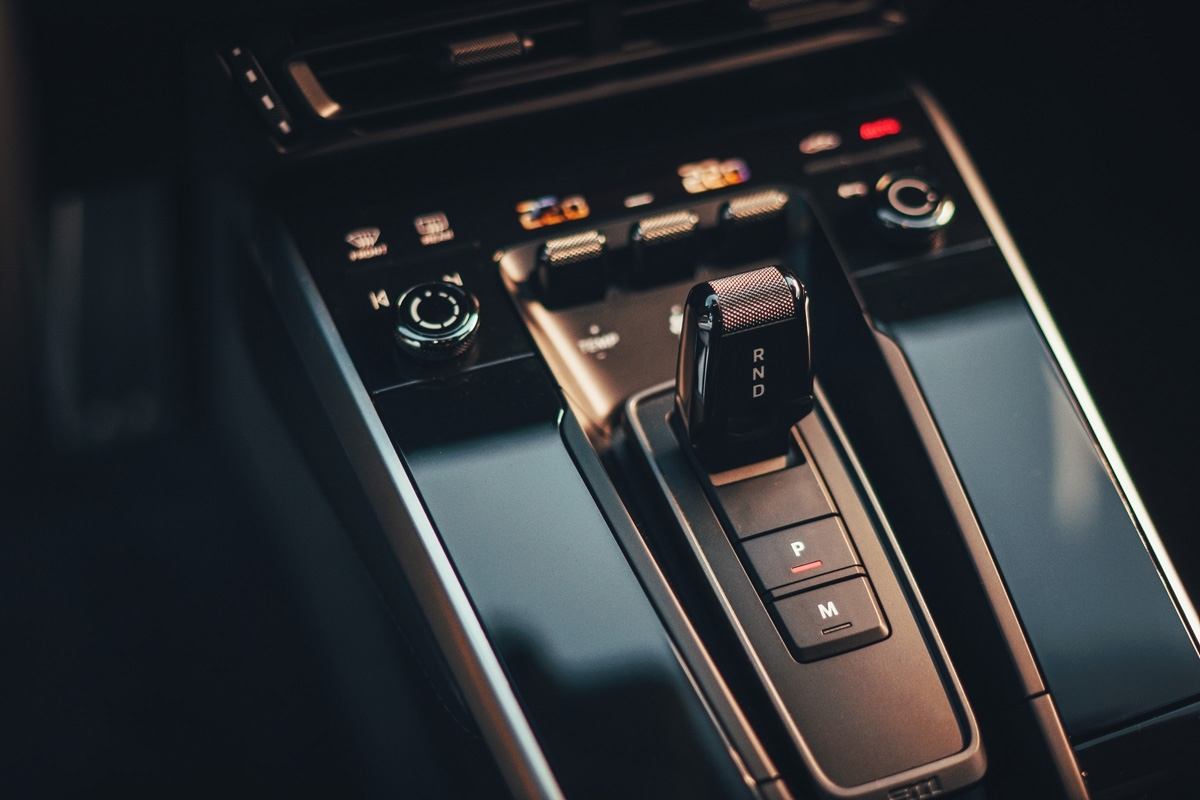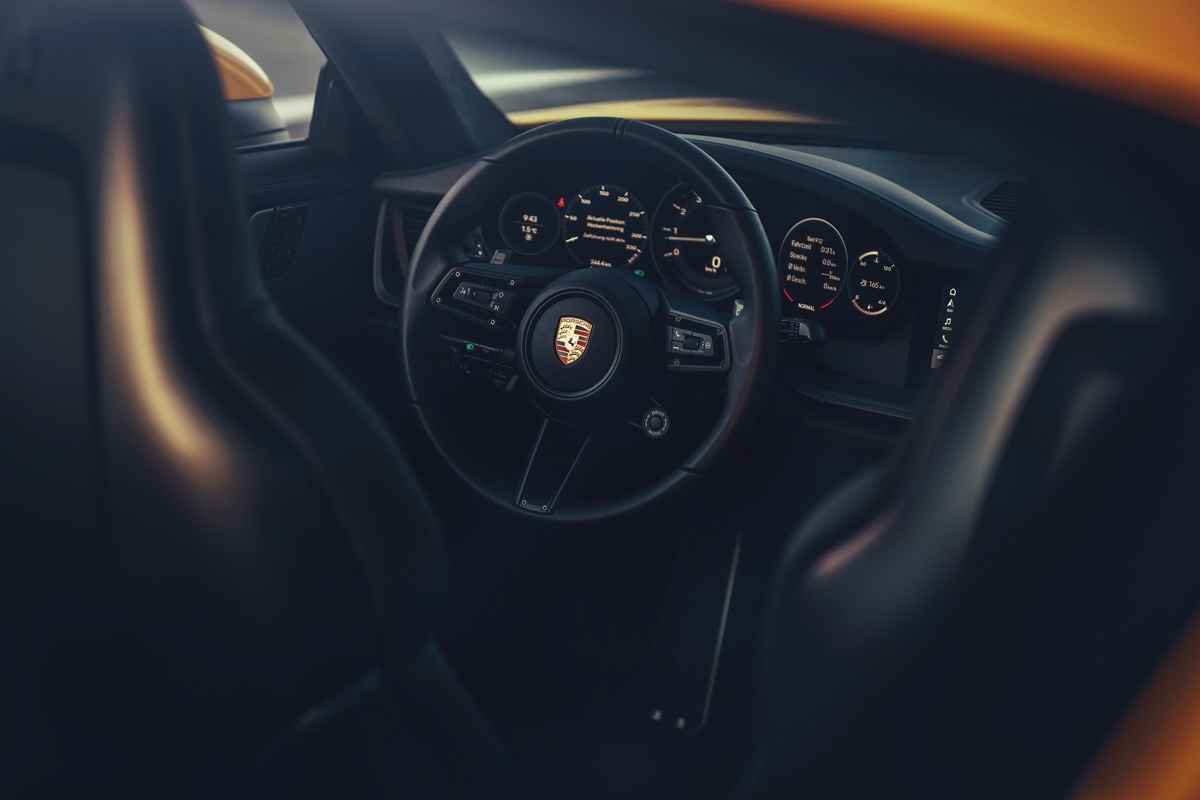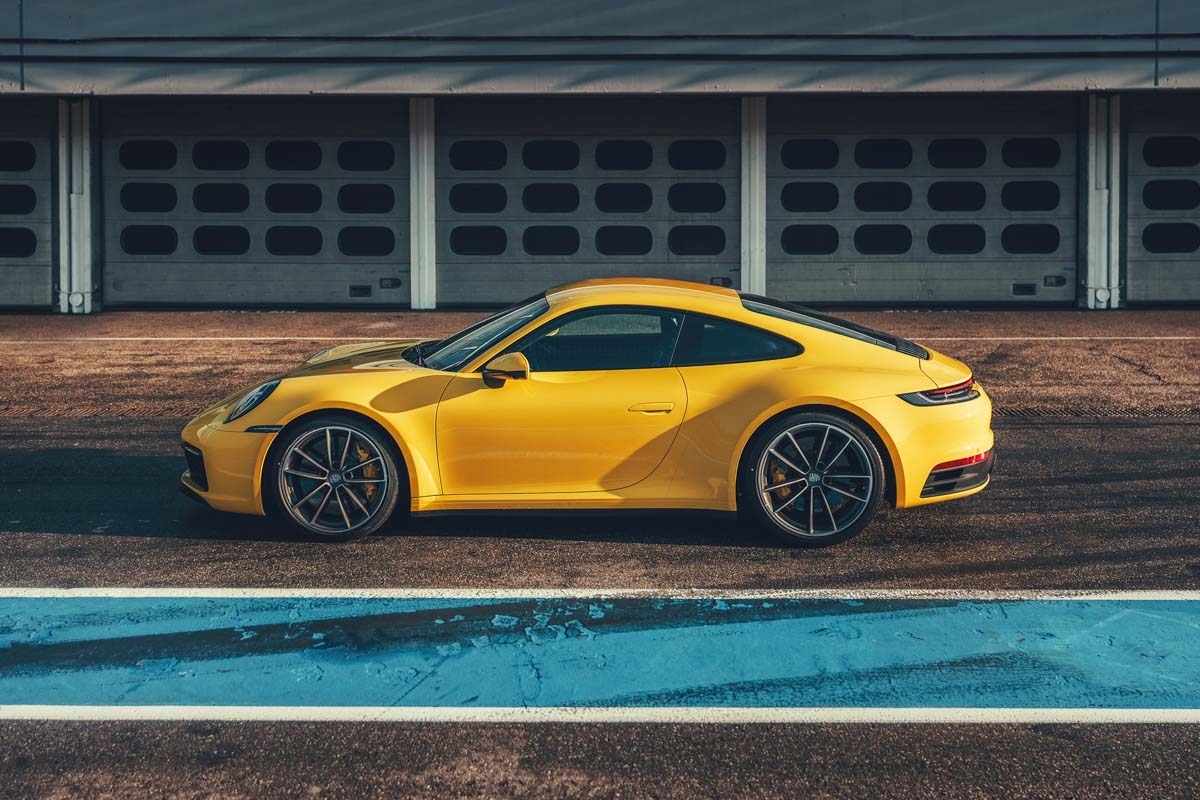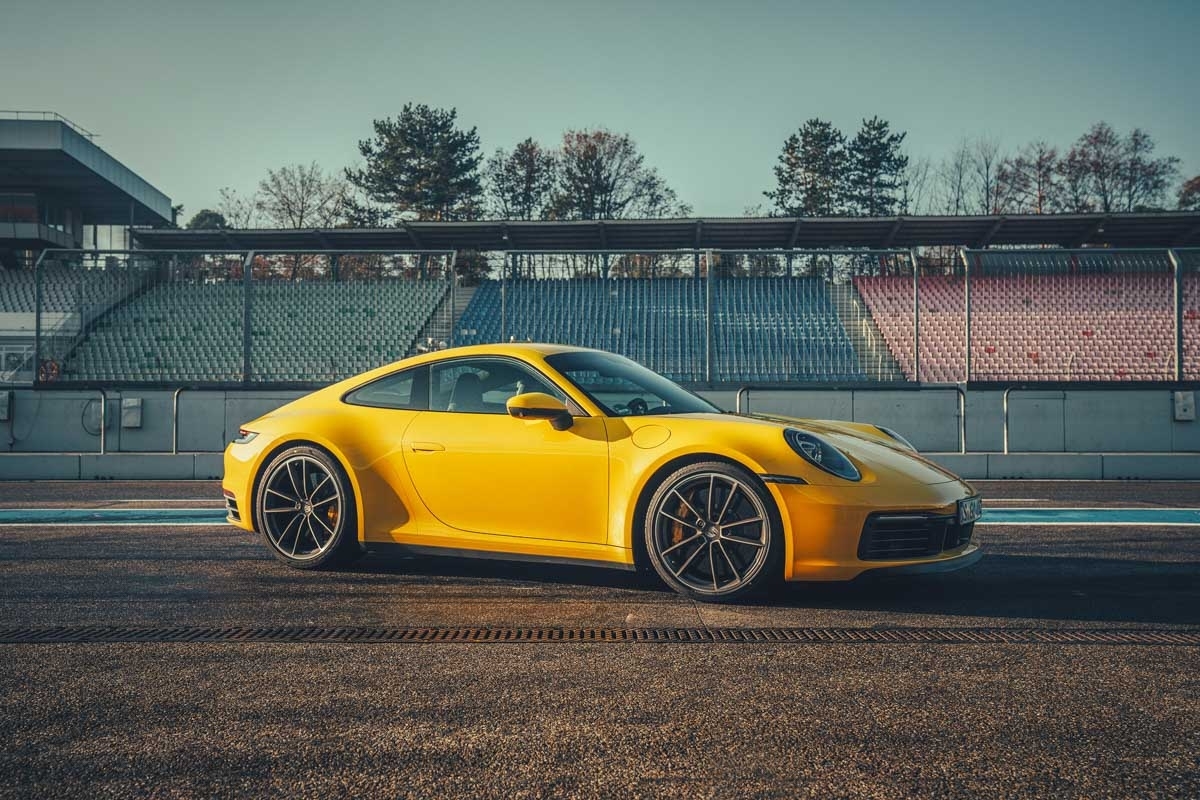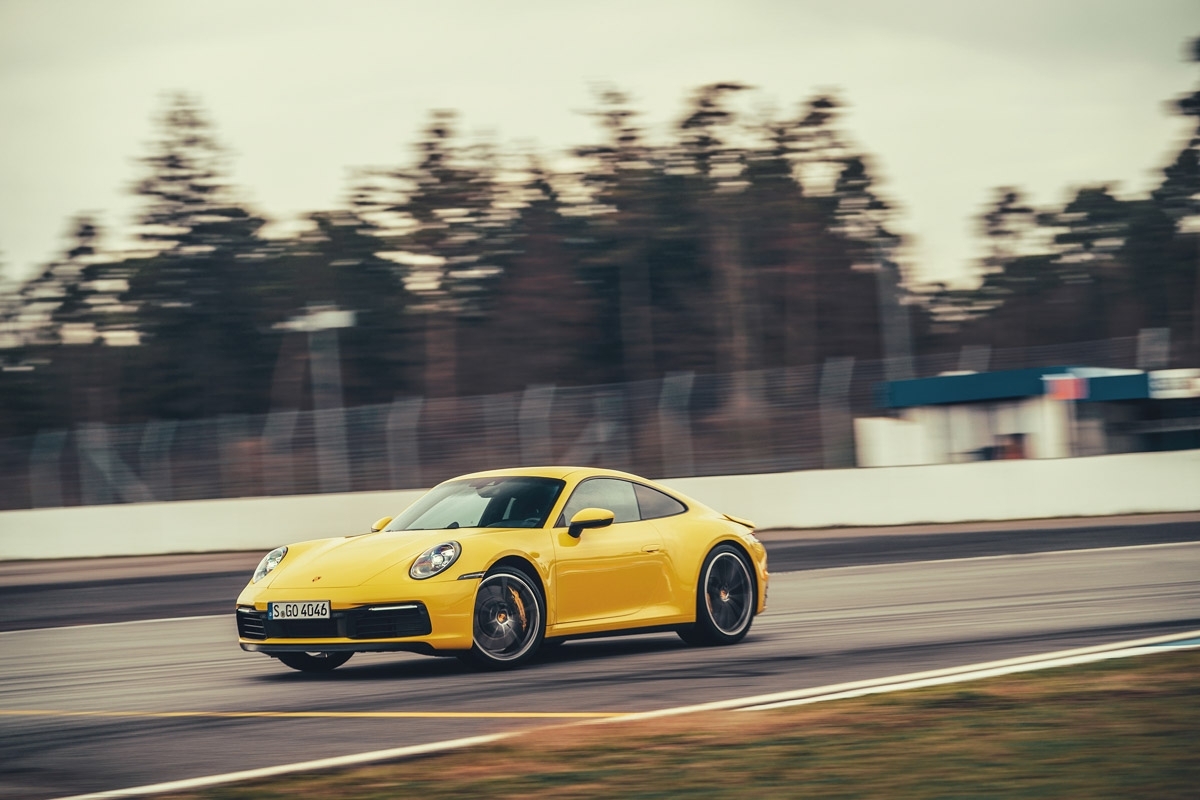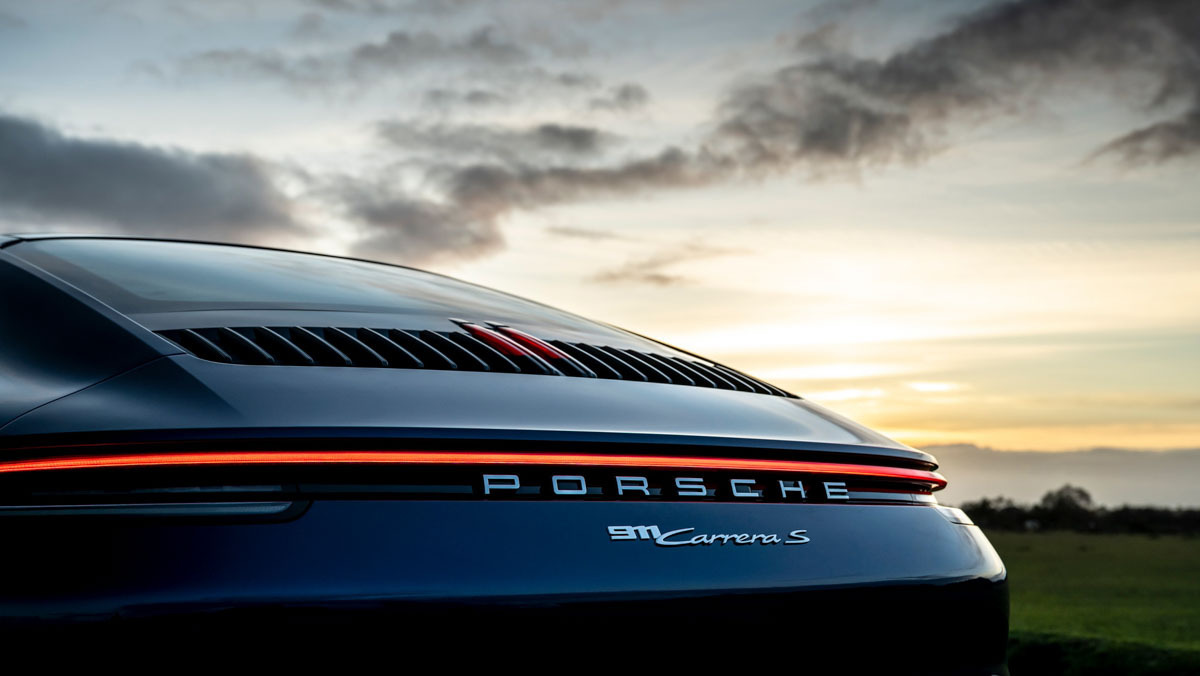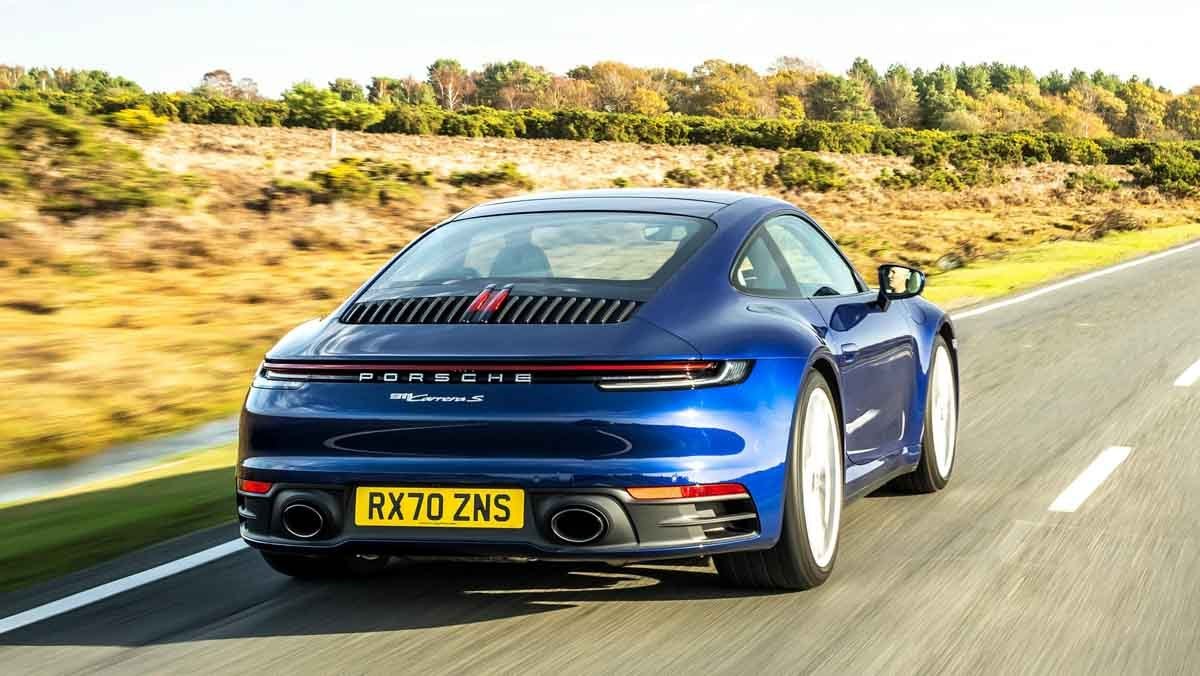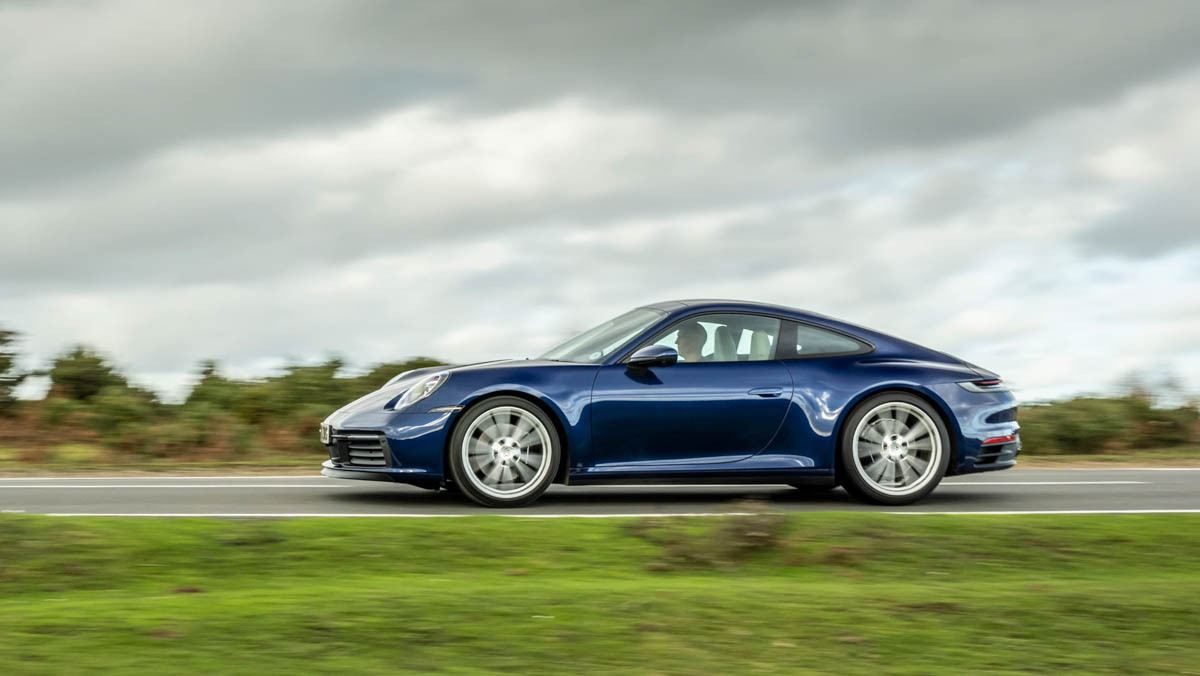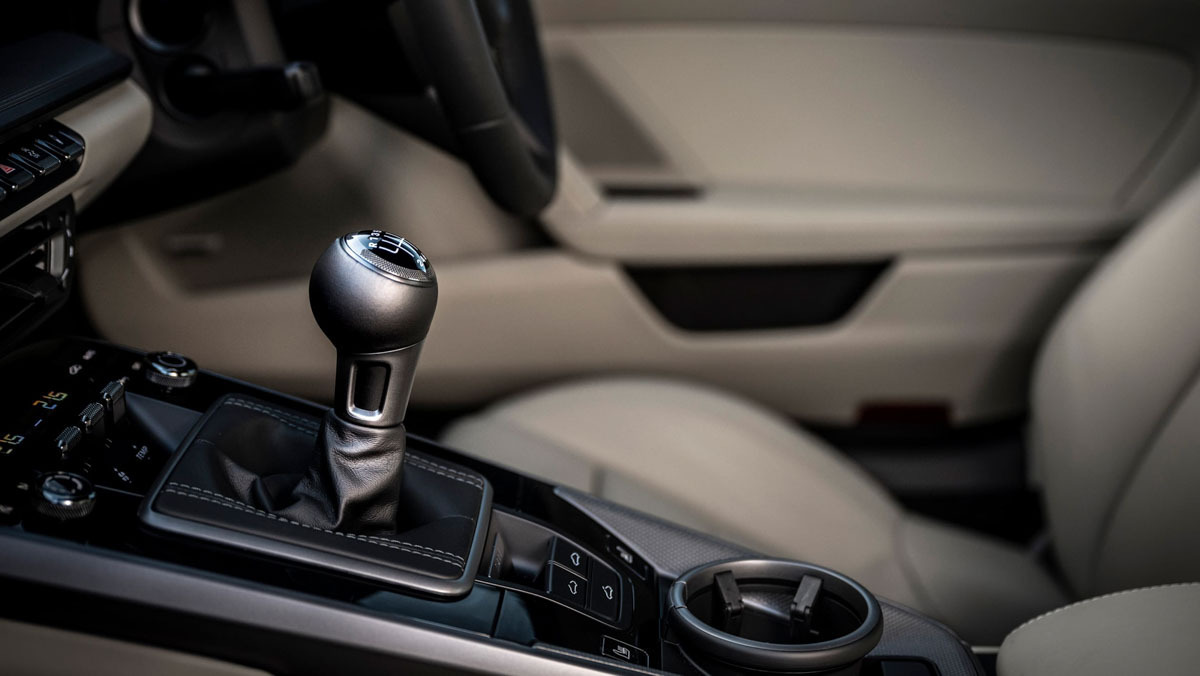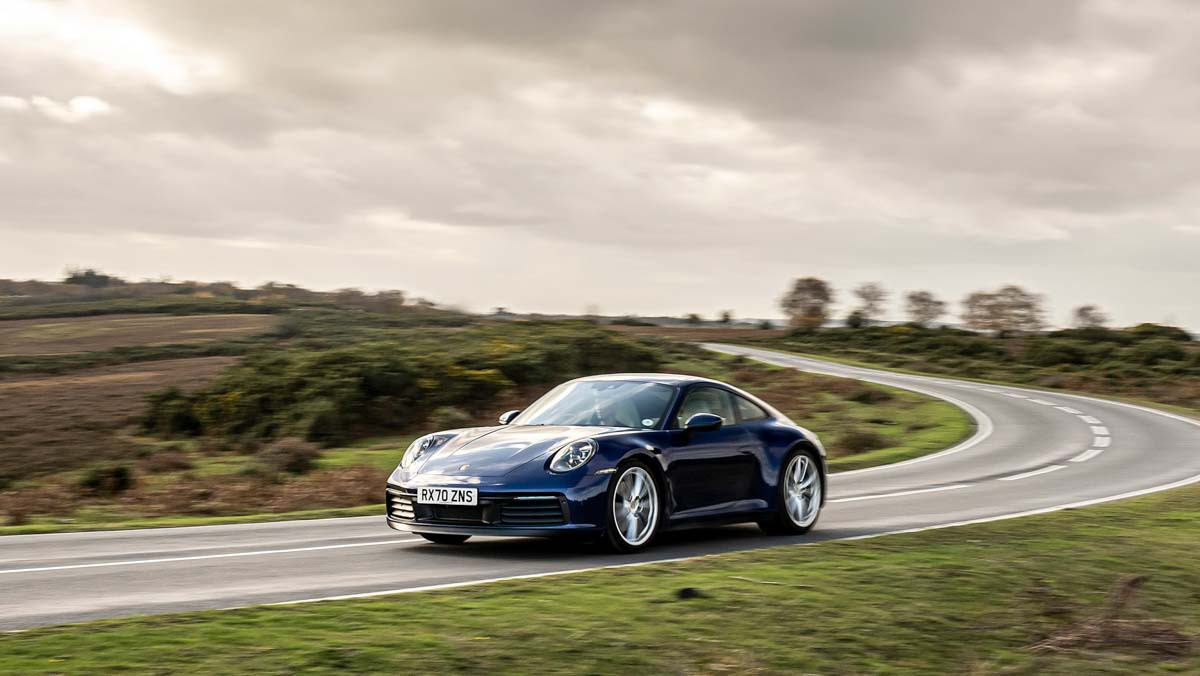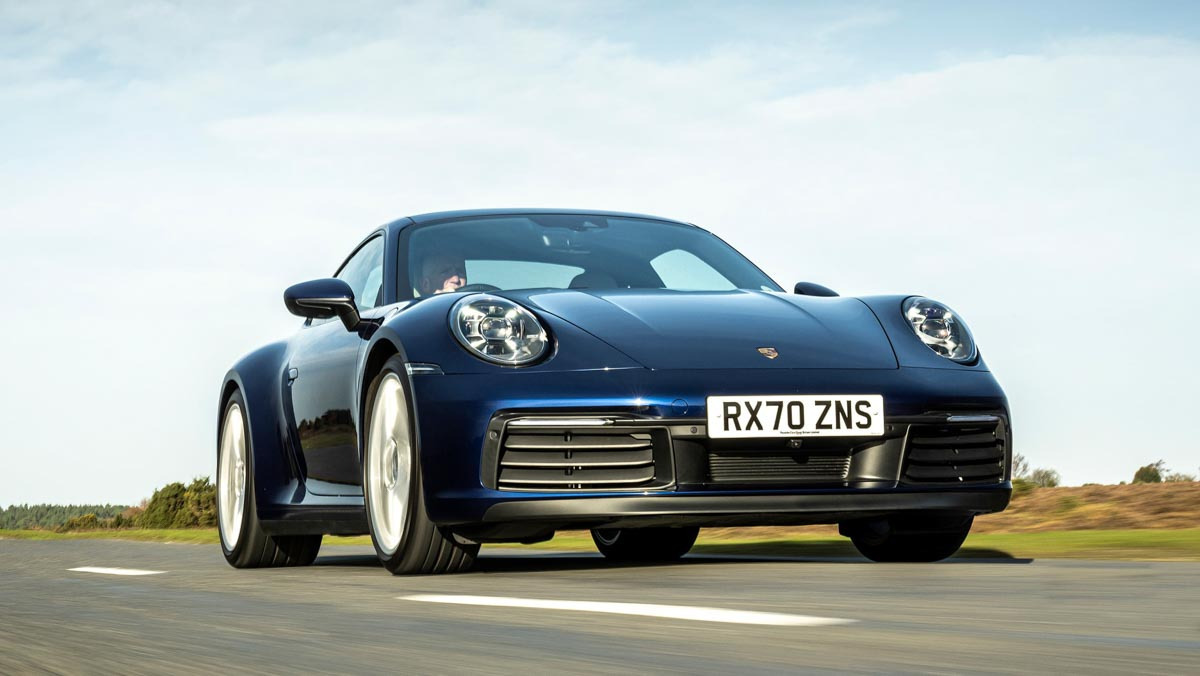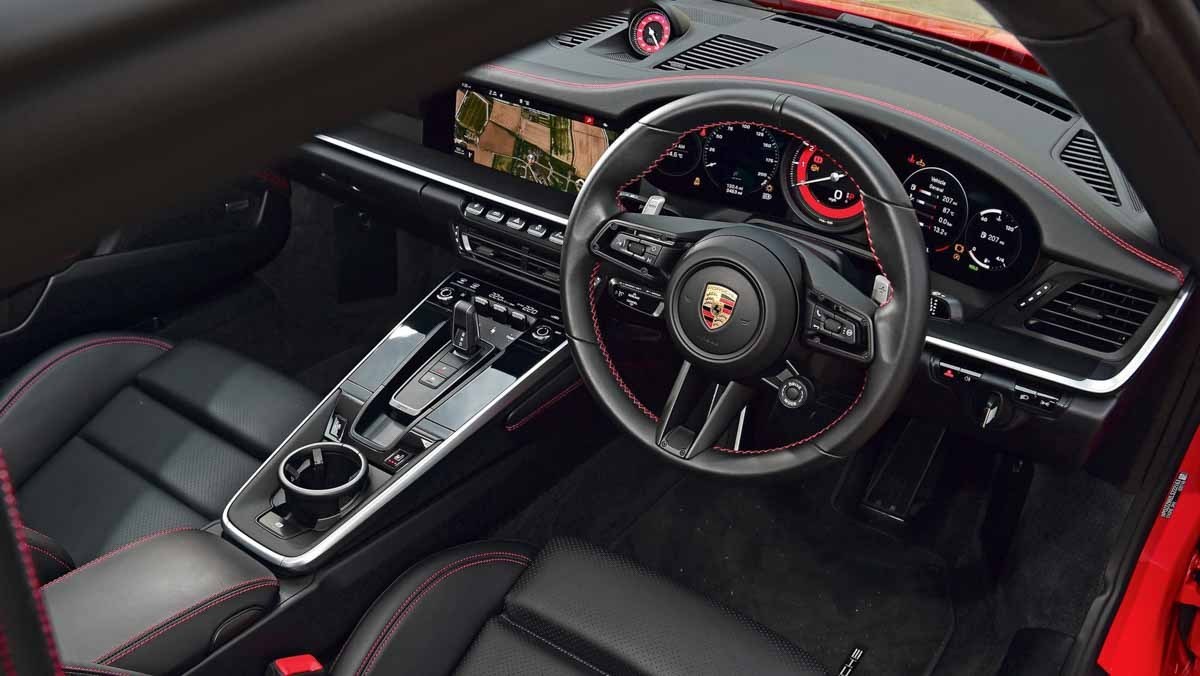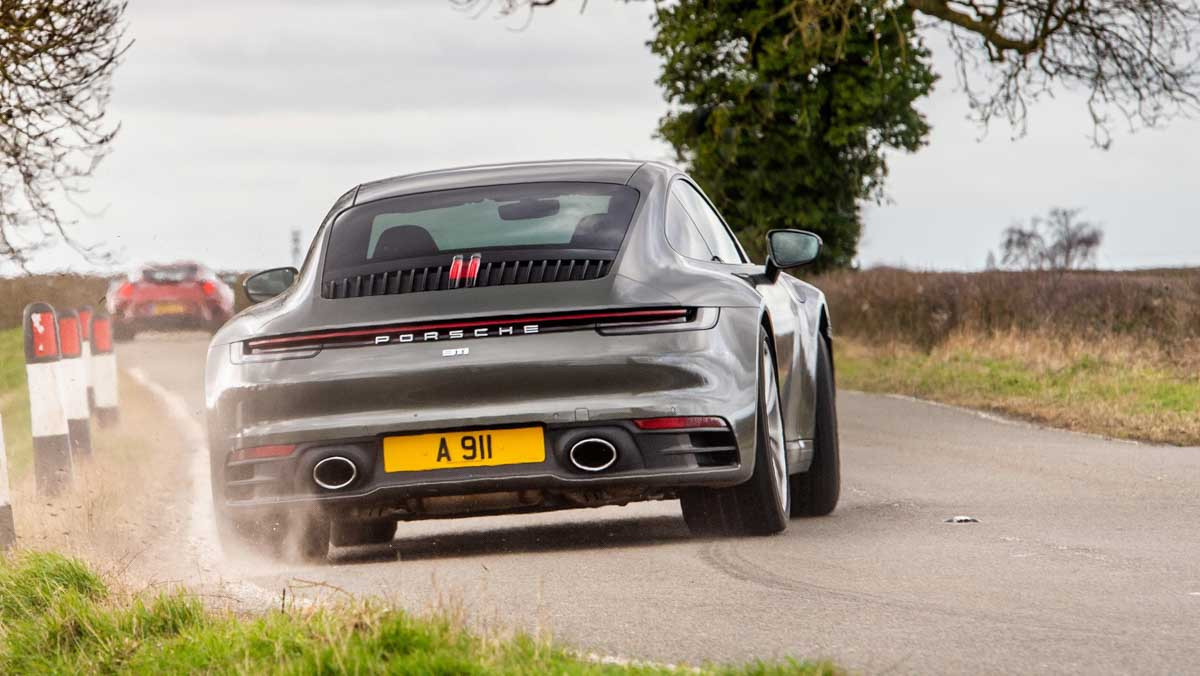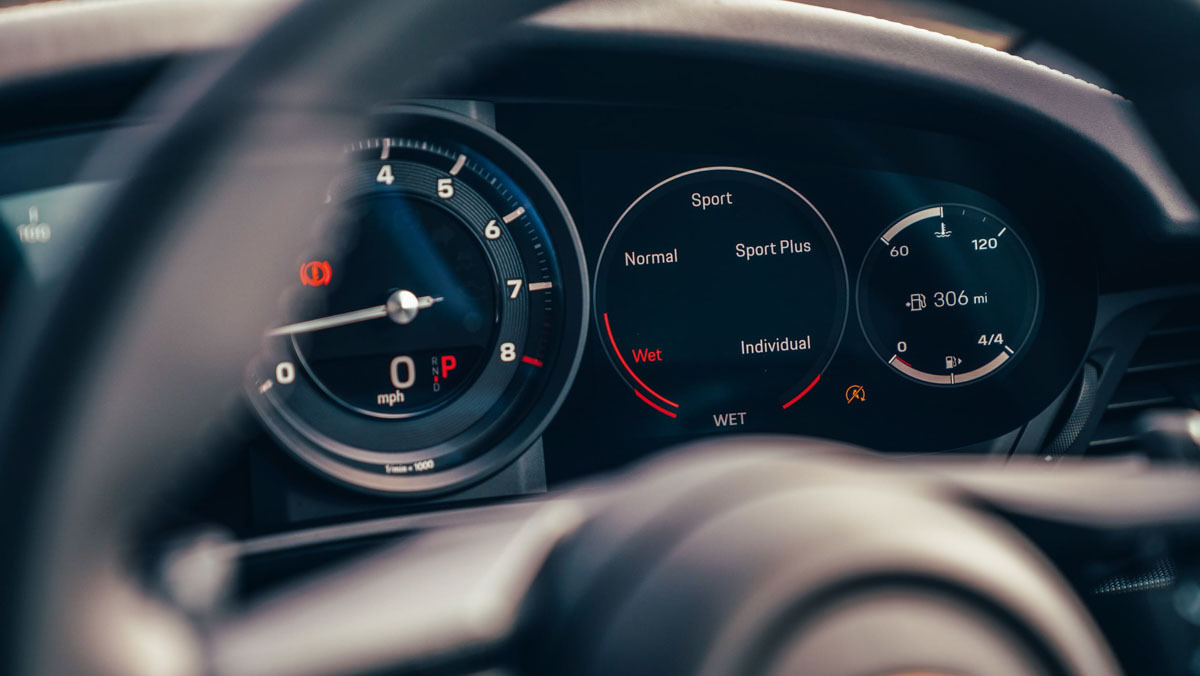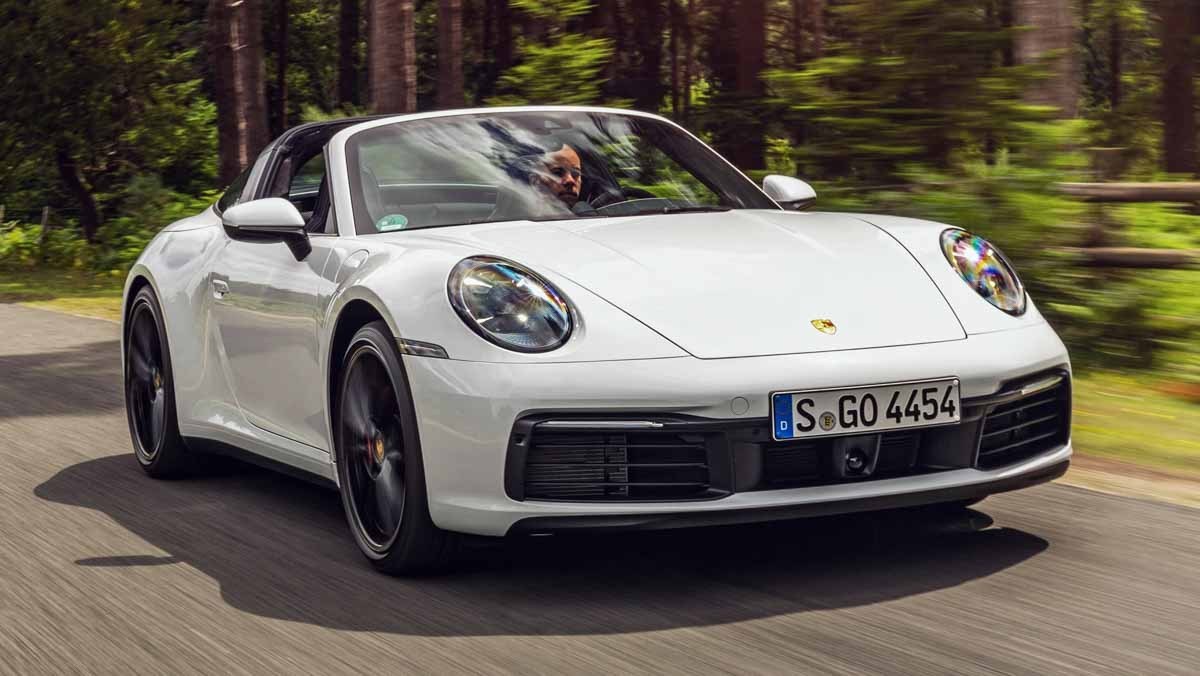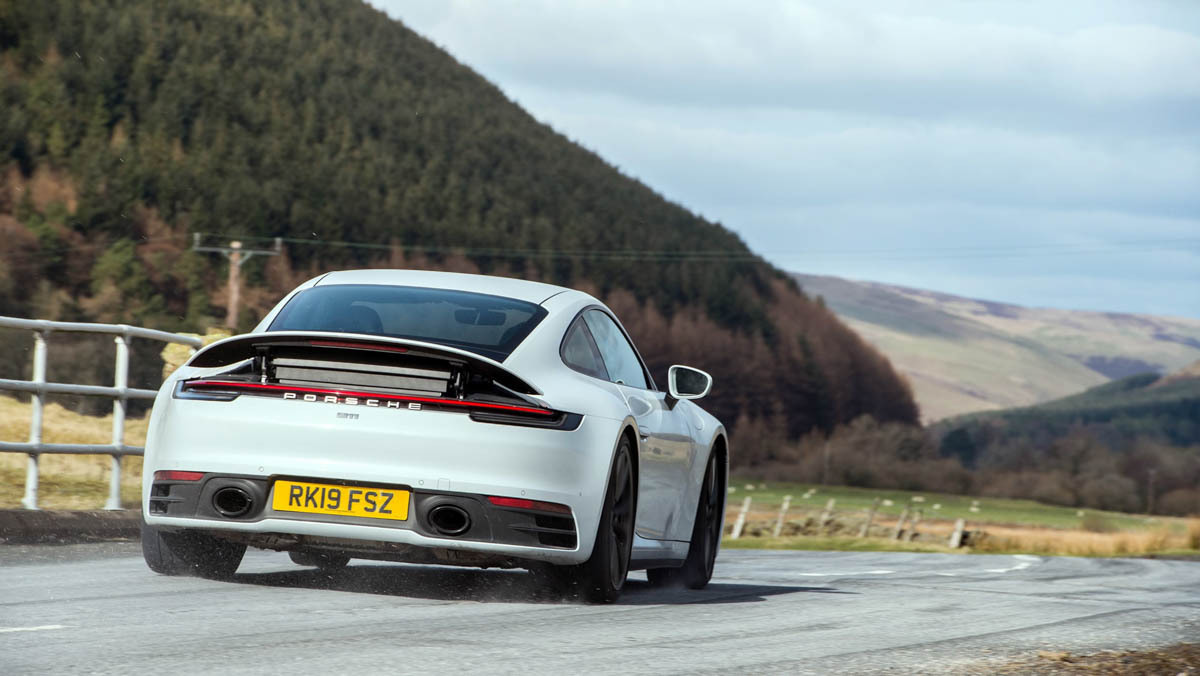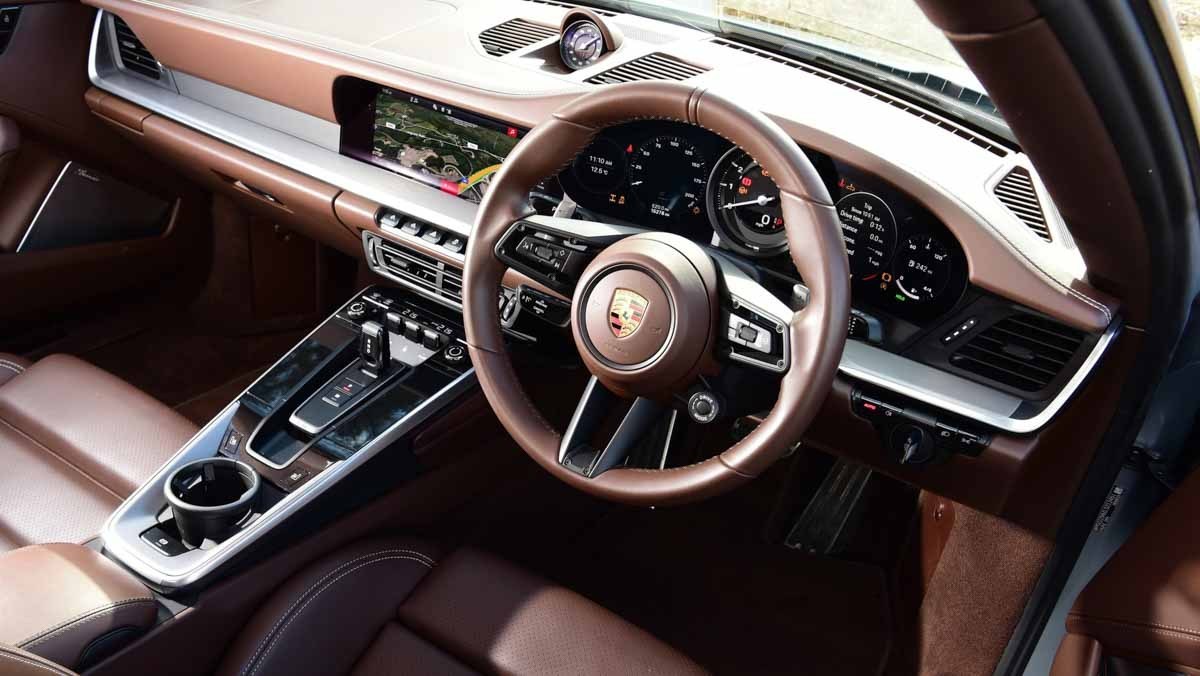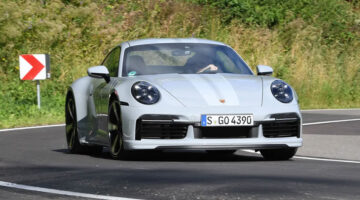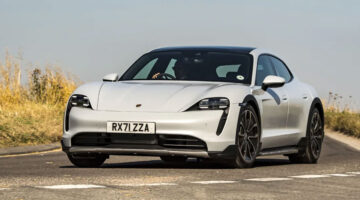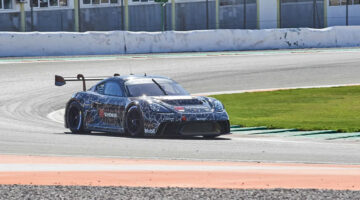The latest Porsche 911 is more complete than ever, but it takes time to discover its character
| Impressive powertrains, chassis, response and tactility of controls | |
| You need to push it too hard to find the joy |
There’s no car quite like a Porsche 911 – and for many, that’s part of its evergreen appeal. The latest 992-generation is familiar in many respects, and differs from its predecessors in others, but get it on a twisting road or a race track and there’s no doubting its provenance.
While marginally larger and heavier than the 991-generation model it replaced, the 992 is also more advanced. The architecture is more aluminium-intensive, it sports wider tracks, and Porsche’s turbocharged engines which have been fettled for even more power and torque.
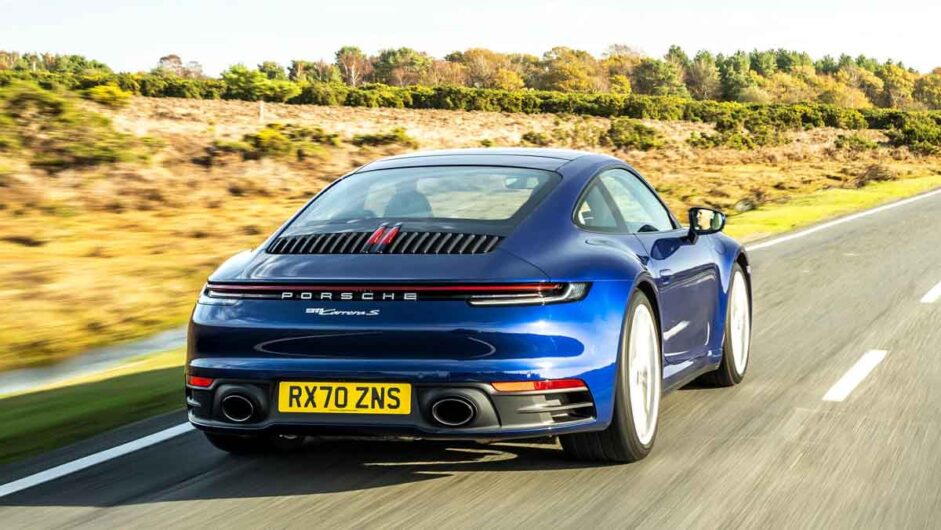
And while the exterior styling is a gentle evolution – bulkier in some areas, but sleeker in others – the cabin has undergone a more comprehensive transformation, with new interfaces and a contemporary, but still distinctively 911 in character.
As the 992 matures in the market so too has its diversity continued to increase, with the original Carrera S models joined by standard Carrera models, Targas and the Turbo and Turbo S. The GT division’s models are on the cusp of appearing too, with the new GT3 appearing early next year.
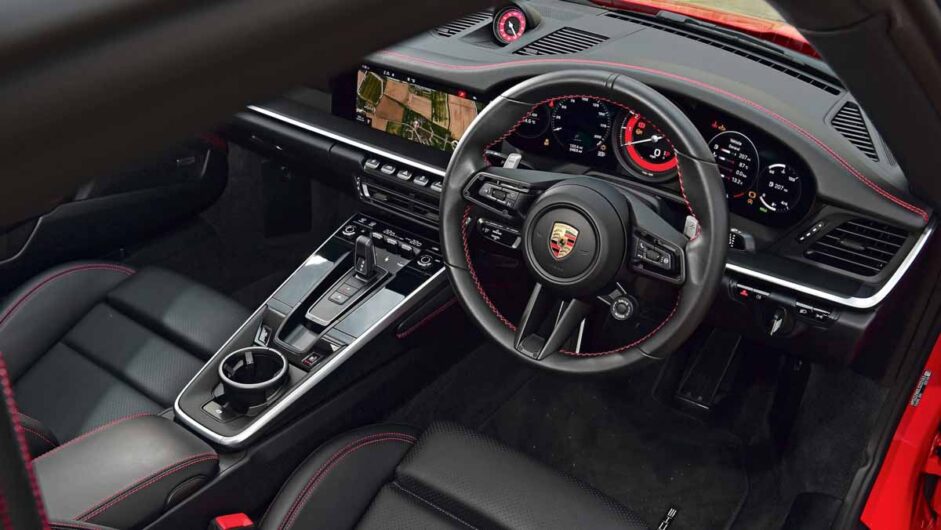
Prices, specs and rivals
911s have been around so long you could use them to measure inflation, and a starting price of £82,793 probably looks quite good value once you’ve traced entry-level 911 prices through the ages. The skill is in any customer who can drive out of their local Porsche dealership having paid no more, as Stuttgart’s options list is vast, and adding five figures to that number is easily done.
The Carrera 4 coupe starts a little above this, at £88,101, and the Cabriolet at £92,438. Just a little more – £93,110 – is where the Carrera S price lists begin, with the 4S at £98,418 and the S Cabriolet breaking the hundred grand barrier at £102,755. Targa 4 and 4S models are priced identically to their cabriolet counterparts, and only available in all-wheel drive forms.
For some context on options pricing, the last Carrera S we drove came in at £109,187, including £1844 of sports exhaust, £1646 for Sport Chrono, £2054 for Porsche Dynamic Light System Plus LED headlights and £1599 for 14-way electric sports seats, among many other options. The beauty, of course, is that you can really make a 911 your own. That’s before you even start adding Porsche Exclusive Manufaktur options such as, for amusement’s sake, leather air vent fins…
Even a standard Carrera is not light on equipment, with features such as four-way adjustable sports seats, LED headlights, climate control, keyless go and cruise control as standard, as well as leather seats and that large 10.9-inch central display.
Finding a true rival for the 911 is difficult. If it hadn’t escaped your attention, there are no other rear-engined 2+2 sports cars on the market, and very few in fact that are 2+2 full stop. In a recent test we compared the Carrera S against four other cars – the Aston Martin Vantage, Lotus Evora 410, Audi R8 and McLaren 570GT – but one of the greatest takeaways from that was the impressive variety at this level in the market. That, and as a vehicle to live with every day, the 911 is still very difficult to beat, even if others are faster or more exciting.
Engine, gearbox and technical details
As the 992 has matured in the market, so too has the range expanded in both powertrain and body style. Currently there are two Carrera options with and without all-wheel drive (both now share a single body-in-white) plus the new top-tier Turbo and Turbo S. Each are then multiplied by hardtop and Cabriolet versions, with Carrera 4 and 4S models also available as a Targa. Carrera S models of any body shape are available with either a seven-speed manual or eight-speed PDK, while all other powertrains exclusively feature the PDK. Get it?
The Carrera’s 3-litre twin-turbocharged flat-six with 380bhp and 332lb ft, and the Carrera S’s 3-litre twin-turbocharged flat-six with 444bhp and 391lb ft. The latter figures, for reference, are very similar to the output produced by the old 991 Carrera GTS (and comfortably above the 996 Turbo’s – how times have changed).
Carrera 4 and Carrera 4S models use all-wheel drive, but all 992s currently use an eight-speed PDK dual-clutch gearbox, controlled as ever by a pair of paddles behind the steering wheel and via a new and curiously small transmission selector on the centre tunnel.
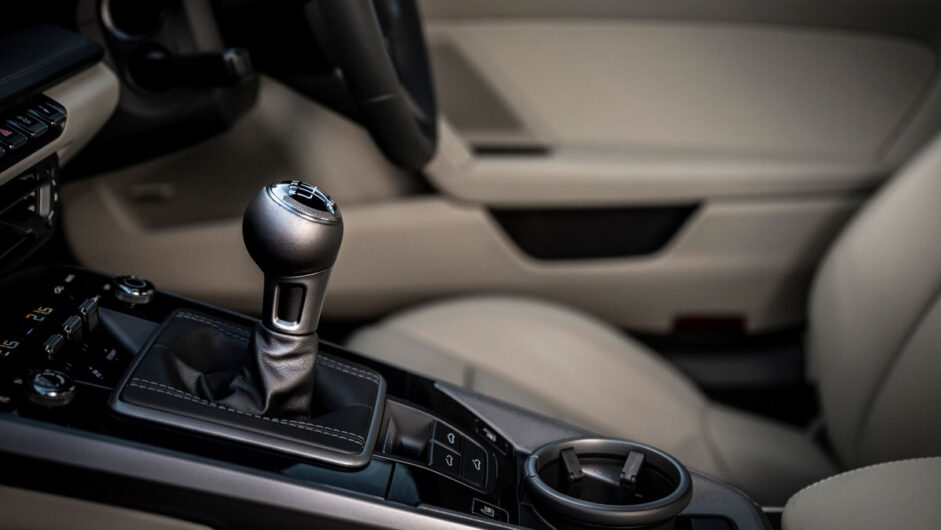
The 992s also feature petrol particulate filters in the exhaust system for the first time, helping to meet Euro 6 emissions regulations, but elsewhere it’s business as usual: suspension is by MacPherson struts up front with a multi-link rear axle, and the rack and pinion steering is electrically assisted. The wheel and tyre set-up is staggered: 19 and 20 inches on the Carrera, 20 and 21 on the Carrera S.
The 992’s structure though is more aluminium-intensive this time around. Only 30 percent of the shell is now steel, and the main body pressing is aluminium. There’s only one body shape, in contrast to previous 911s, which means two-wheel-drive models are now the same width as all-wheel-drive cars. The two-wheel-drive Carrera weighs in at 1505kg, the Carrera S 10kg more, all-wheel-drive models another 50kg, and Cabriolets an additional 70kg.
Turbo models have switched over to a new engine for the latest generation, drawing its base in Carrera S’s architecture, but with a larger 3.8-litre capacity, two variable geometry turbos and a completely different intake and cooling system. The Turbo models typically have much bigger numbers, with the standard Turbo running 572bhp and 552lb ft of torque, with the flagship S featuring a big jump to 641bhp and 590lb ft.
Performance and 0-100 time
A couple of decades ago a 0-62mph time of four seconds flat would have been among the quickest cars on sale. Today, it’s possible in the entry-level 911 Carrera – along with a top speed of 182mph.
The Carrera S is not unexpectedly quicker still: 3.7sec to 62mph, with a top speed of 191mph. The 4S sheds a tenth from the sprint but goes 1mph slower, while the weightier, less aerodynamic convertibles are two tenths slower to 62mph but only 1-2mph down at the top end.
Turbos are typically even more beserk given the big jumps in power and torque. Turbo models will hit 62mph in 2.8sec, and the Turbo S 0.1sec faster still at 2.7sec. Top speeds are 199mph and 205mph respectively.
So the new 911 is very quick, and feels it on the road too. Truth be told, even the regular Carrera is so quick these days that it’s difficult to imagine wanting any more performance from a road car. The PDK shifts so quickly and seamlessly that going fast is little more than the process of pushing the right-hand pedal down as hard and as long as you dare.
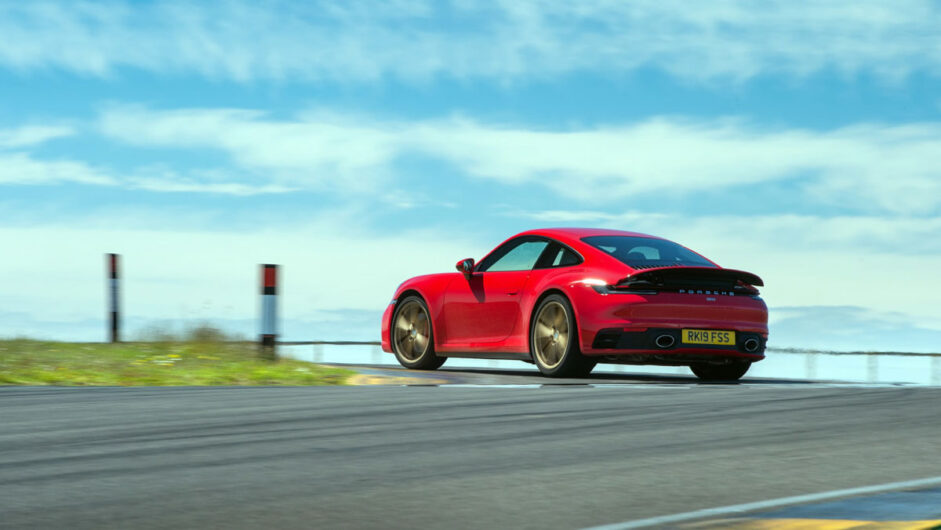
With long gearing you might be inclined to take control of the gears yourself though, just to enjoy some kind of interaction with the drivetrain, and these turbocharged 911s are so potent in the mid-range that you don’t miss too much by not venturing higher up the rev counter. There are some familiar flat-six sounds if you do though, and so quiet is the engine at lower revs it’s worth exploiting now and then just to remind you what you’re driving.
We’re not so keen on Porsche’s sports exhaust this time around though. Perhaps it’s the acoustics of a powertrain that now includes petrol particulate filters, but there’s a loud resonance from the system through the mid-range that skips sporty and goes straight to unpleasant.
Ride and handling
If stepping inside the 992’s cabin suggests an increased air of maturity next to those of previous 911s, then the driving experience continues this initial observation. While still undoubtedly a 911, it now takes just a little more digging to unearth qualities that were previously much closer to the surface.
This may, at first, be a little disappointing for some 911 diehards. Particularly as the 992 feels just a little less tactile than the 991 it replaces, delivering fewer sensations through seat, steering and pedals, and its petrol particulate filter-muffled exhausts delivering less flat-six fizz through to the cabin. Driven at a moderate pace, everything feels just a little too ‘normal’, as if you’re in a downsized Panamera rather than a 911 – still a level above many cars, but no longer as characteristically ‘911’.
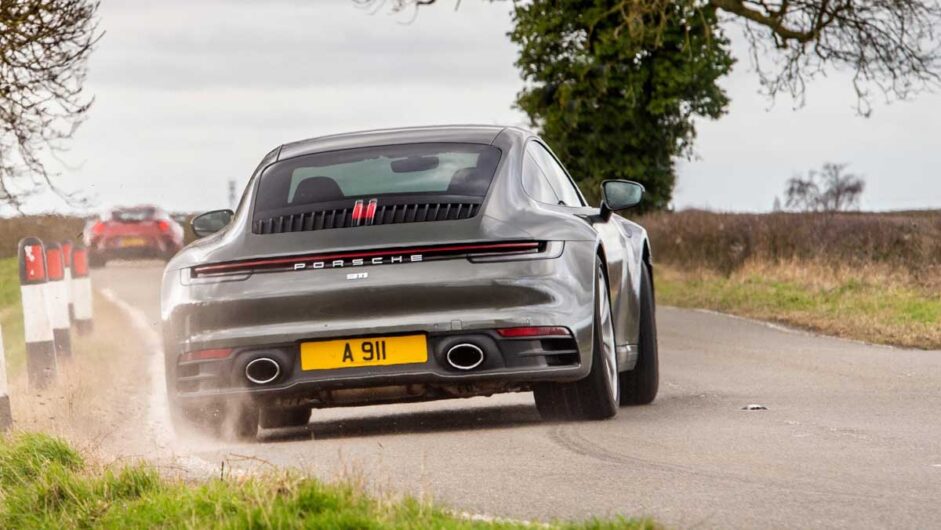
The good news is that as you increase the pace, the shroud does get slowly pulled away. Switch the PDK to manual mode and hang on to lower gears, and the engine feels more enthusiastic, unleashes familiar sounds and has excellent throttle response. Lean harder on the brakes and pedal feel and bite begins to emerge. Give the front tyres more to think about and feedback begins to creep through the steering wheel rim, while bumps and undulations can set the light nose bobbing ever so slightly. And you can get on the power good and early, knowing that if you’re smooth, the rear tyres will simply hook up and launch you down the next straight.
The downside to all this is that given the 911’s performance threshold is now so high, you’ll be travelling at quite some rate by the time your 992 has turned into a 911. Porsche’s own Cayman still demonstrates its abilities and its balance at more accessible speeds, and as the 911 grows ever wider, its smaller counterparts still feel better sized for UK roads. There is of course one caveat – the handling balance in low-grip situations is highly entertaining, with Porsche’s typical clarity of control allowing you to augment the 911’s movements with accuracy and confidence at much lower speeds.

As a GT however, the 911 is better than ever. There’s still plenty of characteristic 911 road roar, but wind and engine noise are well suppressed, and while the ride is quite firm at low speeds, it seems to improve as your velocity increases – as a fast A-road or motorway cruiser, those Panamera-like talents are easy to appreciate.
The manual transmission is of course an important additive to the 911’s viscerality, with its sweet shift and an inherently more connected experience that no automatic transmission can offer. The issue is the astonishingly long gearing, which despite its seven ratios tops out at 85mph in second and 110mph in third, essentially keeping you in the engine’s lower half of the rev range at all times on the road. Long gearing in manual Porsches is quickly turning from a mild inconvenience into a real flaw, and granted it’s due to some particularly unfriendly emissions regulation cycles, it is a problem that needs to be addressed.
L/100km and running costs
Figures for the standard Carrera sit between 26-29mpg on the WLTP cycle, the Carrera S is capable of a combined 25-28mpg. All-wheel drive models don’t represent a huge drop considering the additional driveline components.
Those figures are actually quite realistic, as you’d hope from the WLTP test. A touring figure of 30mpg or more certainly isn’t out of reach in our experience, though it’s worth mentioning that for all the supposed economy and emissions benefits of turbocharged engines, we achieved much the same figures with similar ease from the old naturally aspirated models…
Extend the flat-six and you can expect lower numbers, but with a 64-litre fuel tank (67 litres in the 4S) you can expect a tank range of 350-400 miles.
Interior and tech
As with the exterior design, 911 cabins have been a largely evolutionary affair, yet the new 992 takes things a little farther than before. Amongst a few classic details like the five-ring dial pack (four of which are digital now), the 992’s interior is classy, well appointed, solidly built and luxuriously trimmed, and can of course be enhanced even further with an almost endless list of optional finishes and accessories.
The basic design has certainly matured. Centrepiece is a three-spoke, 918-style steering wheel just like before, but also notable is the new instrument cluster, which comprises a traditional analogue tachometer (albeit quite different in appearance to previous 911 clusters), flanked by a pair of digital screens.
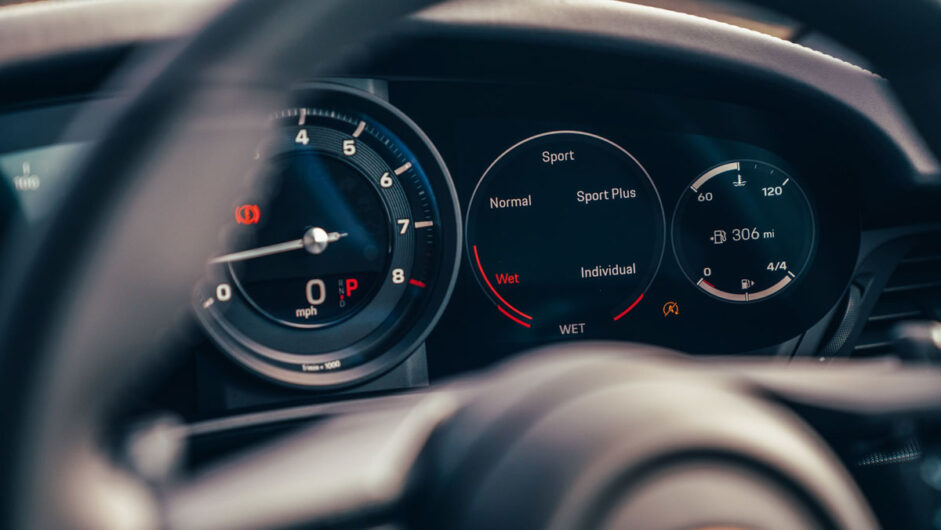
Porsche tradition continues in that the outer edges of these two screens are obscured by the steering wheel, but the information they present (from conventional trip computers to satnav mapping) is as clear and concise as in any other Porsche.
The rest of the interior takes several cues that were introduced with the current Panamera, from a flat centre console adorned with touch-sensitive switches, to the wide touchscreen in the centre of the dashboard. The environment is certainly more traditional than the Panamera’s high-tech approach, but quite different from the 991’s. Different too is the gear selector for the PDK, which is one of few areas to let the side down both visually and in terms of tactility – the small lever is nothing like as satisfying as the old pistol-grip affair.
The driving position is excellent, and as a 2+2 with a surprisingly large luggage area under the front cover, the 911 continues to offer more practicality than many cars you’d consider rivals. It’s a shame though that in the move towards a more GT-like feel, the old 911 bugbear of high road noise hasn’t been banished – it’s one of very few things that spoil the cabin ambience.
Design
Well, it’s a 911, isn’t it? You could recognise that profile a mile off, and Michael Mauer and his team have seen fit not to play around too drastically with the 911’s details either. At the front, it’s very similar indeed, keeping the same proportions but introducing a slight chamfer to the bonnet and using a slightly cleaner, more squared-off opening for the lower grilles.
The changes are more prominent at the back, where all models now get a full-width light bar, similar to that used on Carrera 4 variants of the 991, but with a more modern appearance. The number plate cut-out has also moved from the centre of the bumper to the lower valence (unless you opt for the Sport Design package), while the third brake light is now in the centre of the vents below the rear screen.
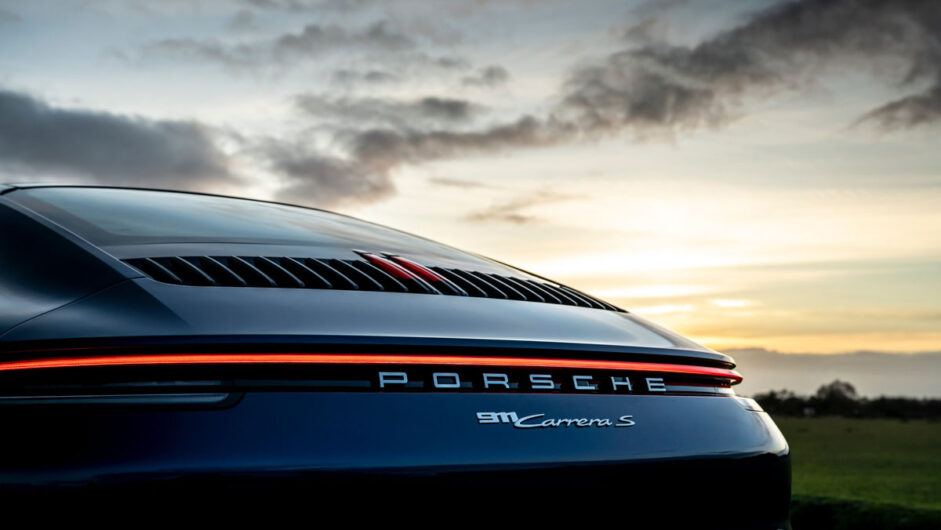
The overall appearance is slightly more hunchbacked than before – the 911’s tail has been rising steadily since the transition from 993 to 996 – but the car’s wide rear arches look great, and overall it’s probably a cleaner shape than that of the car it replaces. Tick the right option boxes and you can end up with something really very classy indeed.
There is one design detail we’re still not keen on though: the door handles. The old 911 pull-style handles have been replaced by a lift-up handle that sits flush with the body when the doors are locked or the car is in motion. Or just inconveniently sometimes, requiring you to reach below a semi-closed handle to unceremoniously pop the door open. They feel a bit fiddly even when correctly popped-out, and it’s a slightly frustrating initial interaction with the car every time you use it.
This article originally appeared at evo.co.uk
Copyright © evo UK, Dennis Publishing

